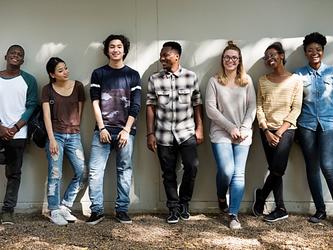Problematic social media use increases among adolescents

The proportion of adolescents classified as ‘problematic’ social media users – defined as a pattern of behaviour characterised by addiction-like symptoms – increased from 7% in 2018 to 11% in 2022, according to the research. Girls reported higher levels of problematic use than boys ( 13% compared with 9%).
The research surveyed around 280,000 young people aged 11, 13, and 15 across 44 countries and regions in Europe, Central Asia and Canada in 2022.
In addition to the risks of social media use, the report also identified that adolescents who are heavy but non-problematic social media users reported stronger peer support and social connections.
The HSBC study is published in partnership with the World Health Organisation (WHO). The report authors have recommended that evidence-based programmes covering responsible social media use and online safety be implemented in schools.
Hans Henri P. Kluge, WHO regional director for Europe, said: “It’s clear that social media can have both positive and negative consequences on the health and wellbeing of adolescents. That’s why digital literacy education is so important. Yet it remains inadequate in many countries, and where it is available, it often fails to keep pace with young people and rapidly evolving technology.”
Kluge added: “By empowering adolescents to make informed decisions about their online activities, balancing their online and offline worlds, we ultimately help safeguard and improve their overall well-being. This is crucial for ensuring a healthier, more balanced digital future for all communities, societies and countries.”
The HSBC study was started in 1982 by researchers from England, Finland, and Norway. It has been conducting surveys of young people every four years since 1985, with an increasing number of countries participating in each survey cycle.
Data is collected in participating countries and regions through school-based surveys. Each country or region uses cluster sampling to select a proportion of young people aged 11, 13 and 15, ensuring that the sample is representative of all in the age range. Around 1,500 students in each studied country or region are selected from each age group. A total of 279,117 young people took part in the 2021/22 survey.

We hope you enjoyed this article.
Research Live is published by MRS.
The Market Research Society (MRS) exists to promote and protect the research sector, showcasing how research delivers impact for businesses and government.
Members of MRS enjoy many benefits including tailoured policy guidance, discounts on training and conferences, and access to member-only content.
For example, there's an archive of winning case studies from over a decade of MRS Awards.
Find out more about the benefits of joining MRS here.














0 Comments